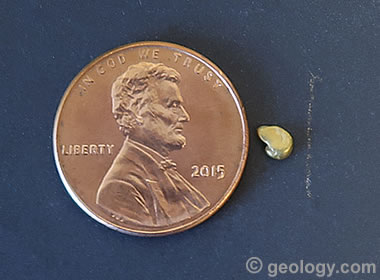
.............................................................................................................................................
Fool's Gold
Don't be fooled: These quick tests separate
pyrite from real gold
Article by: Hobart
M. King, Ph.D., RPG
What
Is Fool's Gold?
"Fool's
gold" is a common nickname for pyrite.
Pyrite
received that nickname because it is worth virtually nothing, but has an
appearance that "fools" people into believing that it is gold.
With a
little practice, there are many easy tests that anyone can use to quickly tell
the difference between pyrite and gold.
The
nickname "fool's gold" has long been used by gold buyers and
prospectors, who were amused by excited people who thought they had found gold.
These
people did not know how to tell the difference between pyrite and gold, and
their ignorance caused them to look foolish.
Separating
Fool's Gold from Gold
Here
are a few simple tests that almost anyone can use to tell the difference
between pyrite and gold. They can usually be done successfully by inexperienced
people.
However,
wise people obtain a couple small pieces of pyrite and a couple small pieces of
gold and use them to gain valuable experience.
CAUTION: All pieces of gold are valuable. However, any piece
of gold with a nice crystal habit will have a premium value
- often worth several times the value of its contained gold. That premium value
can be ruined by some of the tests explained below. So, we have separated the
tests into "destructive tests" and "non-destructive tests".
Be careful if you think that you might have a valuable gold specimen.
Non-Destructive
Tests
A) Tarnish: Most specimens of pyrite,
found in nature, will have at least some tarnish on their surface. Nuggets or
small flakes of gold are usually bright and untarnished.
B) Color: Pyrite has a brassy color. Gold
has a golden to yellow color. Most native gold is alloyed with silver,
and if the silver content is high enough, the specimen will have a whitish
yellow color.
C) Shape: Pyrite is usually found as
angular pieces, and many of them exhibit the faces of a cube, octahedron or
pyritohedron. Most gold particles found in streams have slightly rounded edges,
but be careful - some crystalline gold specimens can display a crystal habit
that is similar to pyrite.
D) Striations: Many crystals of pyrite
have fine parallel lines on their faces. Gold crystals do not have striations.
E) Specific Gravity: Gold has a specific
gravity of about 19.3. The specific gravity of pyrite is about 5. (All gold
found in nature is always alloyed with other metals.
These metals have a specific gravity which will reduce the specific gravity of
the specimen, but never enough that it approaches the specific gravity of
pyrite. Specimens containing a significant amount of gold will always have at
least two to three times the specific gravity of pyrite.)
Destructive
Tests
A) Streak: Gold has a yellow streak.
Pyrite has a greenish black streak. Learn how to do the streak test here.
B) Hardness: Gold has a Mohs hardness of
2.5, while pyrite has a Mohs hardness of 6 to 6.5. Gold will not scratch
a copper surface (Mohs hardness of 3), but
pyrite will easily scratch copper. Gold can be scratched by a sharp piece of
copper, but copper will scratch very few other materials. Learn about the Mohs
hardness test here.
C) Ductility: Gold is very ductile, and a
tiny piece of gold will bend or dent with pressure from a pin or a pointed
piece of wood. Tiny pieces of pyrite will break or resist the pressure.
D) Sectility: Small particles of gold can
be cut with a sharp pocket knife. Small particles of pyrite cannot be cut.
Other
Minerals That Can Fool You!
Chalcopyrite and small pieces of biotite mica
can fool you. Chalcopyrite (a copper iron sulfide) has very similar properties
to pyrite.
It has
a lower hardness than pyrite (3.5 to 4) and a lower specific gravity than
pyrite (4.1 to 4.3), but the same tests can separate chalcopyrite from gold.
Chalcopyrite also has a greenish black streak.
Many
people are surprised that biotite mica can fool people into thinking that it is
gold. This most often occurs when an inexperienced person is panning
for gold and sees a bright flash in their gold
pan.
After
chasing the tiny, highly lustrous flake, they think that it might be gold.
However, slight pressure with a pin can break the flake of mica, but a tiny
flake of gold will bend around the pin.
Hobart
M. King is the owner and publisher of
Geology.com. He is a geologist with over 40 years of experience, has a Ph.D. in
geology, and is a GIA graduate gemologist. Much of his work has focused on coal
geology, industrial minerals, gemology, geologic hazards, and geoscience
education.
He has
authored many of the internet’s most popular articles about rocks, minerals and gems. He writes most of the content
published on Geology.com and compiles its daily news. His writing is read by
over a million people each month, making him one of the world’s most widely
read geologists.
Dr. King
earned a Ph.D. and an M.S. in geology from West Virginia University; a B.S. in
geology from California University of Pennsylvania; and, a Graduate Gemologist
Diploma from the Gemological Institute of America. He is a registered
professional geologist in the Commonwealth of Pennsylvania.
He has
worked as a geologist in a variety of settings since 1975.
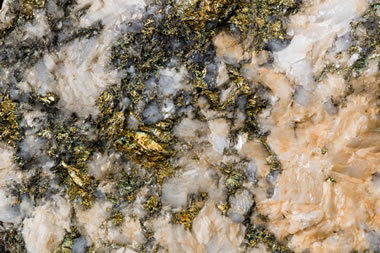 |
Chalcopyrite in Dolomite and Quartz: Gold-colored minerals can be tested even if they are
embedded in a rock. The gold-colored mineral in this rock is chalcopyrite, and
a person could determine that it is not gold by poking the gold-colored
material with a pin and observing if it dents or breaks. This photograph is by
Scott Horvath of the United States Geological Survey.
|
 |
Gold's Streak: A copper
penny and a tiny gold nugget on a black streak plate, with a small streak made
by the nugget. The copper penny is in the photo to serve as a scale. The tiny
nugget weighs 0.0035 troy ounce, and at a gold price of $1200/ozt the nugget,
if it were pure gold, would have a gold value of $4.20. The tiny mark left by
the streak plate removed about $0.06 worth of gold from the nugget.
|
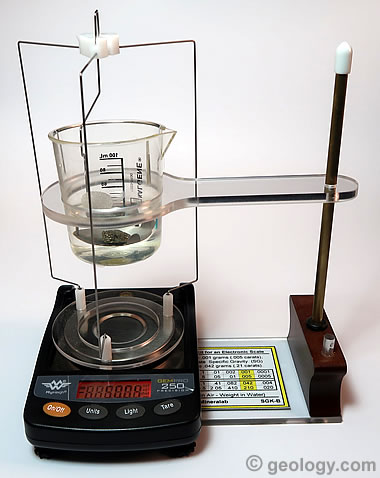 |
Testing Specific Gravity: Specific
Gravity is the ratio between the weight of a material in air and the weight of
an equal volume of water. The device in the photo above is a scale that is used
to weigh the material in air, and a weighing pan that enables the material to
be weighed under water. The weight under water can be subtracted from the weight
in air to obtain the weight of the volume of water displaced by the material.
Specific gravity is then calculated by the formula: Wa / (Wa - Wu) where Wa is
the weight of the material in air and Wu is the weight of the material under
water.
|
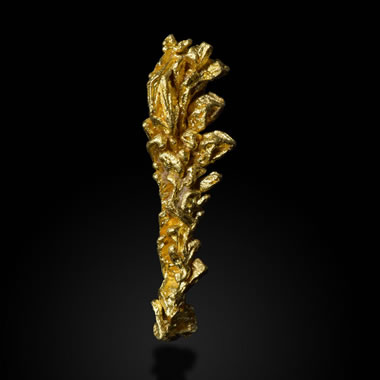 |
Crystalline Gold: A specimen of
native gold from Pontes e Lacerda, Mato Grosso, Brazil, approximately 3.5
centimeters tall. This specimen is visually appealing and displays the
crystalline habit of gold. The value of this specimen to collectors of
crystalline gold would be many times the value of its contained gold.
Destructive tests should not be done on specimens of gold that display a
crystalline habit or specimens of no trivial size that have an attractive
appearance.
|
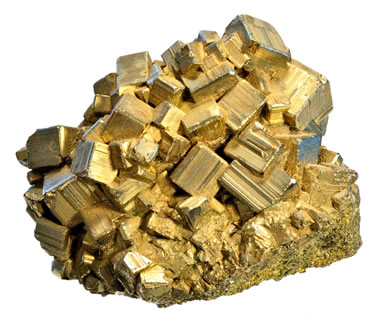 |
Pyrite with Striations: A cluster of
cubic pyrite crystals exhibiting prominent striations.
|

No comments:
Post a Comment